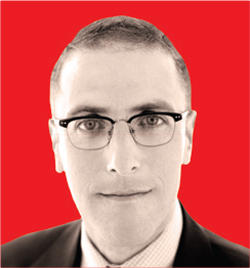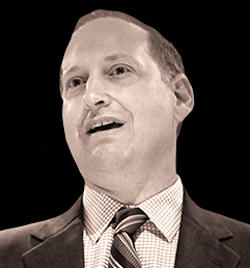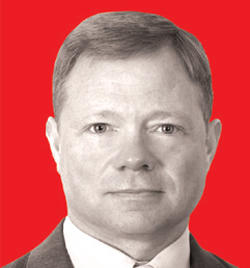Trending
The sports arena endurance test
Despite a crowded market and steep competition, New York stadium development is racing forward

Even though New York is one of the most saturated markets in the country when it comes to large sports arenas, there’s a flood of new stadium plans in and around the five boroughs that shows no signs of slowing. The boom started nearly 10 years ago with the new Yankee Stadium, the Mets’ Citi Field and the New York Jets’ and Giants’ MetLife Stadium all opening within 13 months in 2009 and 2010. Next came BSE Global’s $1 billion Barclays Center, which Forest City Ratner Companies built in Downtown Brooklyn in 2012, followed by the redevelopment of Nassau Veterans Memorial Coliseum, which reopened last year. RXR Realty partnered with BSE to create mixed-use property around the Coliseum to the tune of $1.5 billion. Most recently, the USTA Billie Jean King National Tennis Center in Flushing Meadows-Corona Park, Queens, wrapped up work on all three of its stadiums — a five-year, $600 million project, which included rebuilding the Louis Armstrong Stadium from the ground up.
Looking ahead, projects on the drawing board include the Yankees-led partnership with Related Companies and Somerset Partners to build a soccer stadium for the New York City Football Club in the South Bronx; developer Kevin Parker and former Rangers player Mark Messier’s proposal for transforming the Kingsbridge Armory into a 5,000-seat arena and center with nine ice rinks; and two planned hockey arenas in Long Island, including the New York Islanders’ 18,000-seat Belmont Park arena. The road to getting into the stadium development game is often years in the making, and fraught with debates over who benefits from the massive projects and who’s left paying the bills. Never mind what happens once the whistle blows and a team’s performance flares or falters. In the business of sports, just like real estate, there are winners and losers. Three industry pros gave The Real Deal their take on how New York’s booming sports arena market — and neighboring businesses — may fare.
Seth Pinsky
Executive Vice President, RXR Realty
 How did your partnership with BSE Global, the owner and operator of Barclays Center and Nassau Coliseum, come about? When Nassau County issued the request for expressions of interest [to develop the area around Nassau Coliseum], we reached out to BSE. We had been involved in earlier proposals on the site, but the county made clear in the last few months that they were interested in seeing new ideas. BSE has a stake in the site, obviously, and RXR is a Nassau County-based company, so we care about the community. We also own a number of buildings on the periphery of the site, so we have an economic interest in ensuring that what gets developed there is additive.
How did your partnership with BSE Global, the owner and operator of Barclays Center and Nassau Coliseum, come about? When Nassau County issued the request for expressions of interest [to develop the area around Nassau Coliseum], we reached out to BSE. We had been involved in earlier proposals on the site, but the county made clear in the last few months that they were interested in seeing new ideas. BSE has a stake in the site, obviously, and RXR is a Nassau County-based company, so we care about the community. We also own a number of buildings on the periphery of the site, so we have an economic interest in ensuring that what gets developed there is additive.
How is the partnership with BSE different from working with other developers? It’s really complementary. I think they have a real understanding of how to take what goes on inside the Coliseum and make the neighborhood around it one where people who come will stay and enjoy themselves — and spend their money on retail, food and beverage as well.
Stadiums often fail to deliver economic growth to neighboring communities that owners, developers and local officials promise, research shows. Considering that, how are you approaching this project? This situation is a little different, because here you have a stadium that exists, and in a lot of ways it’s an asset that the county feels is underexploited. So our goal here has been to use the stadium as an anchor for the community that will be one of the main draws. We ultimately envision a mix of uses — obviously entertainment being one of the important ones — but also complementary retail and commercial office space.
How will the financing work? Those kinds of details will depend on the specifics of the project. We’re now engaged with BSE and Nassau County to iron out all of those details.
Will public dollars be used in the project? There is money that has been allocated to the site previously at the state level, and our hope would be to continue to leverage that. But we would be bringing very significant private resources to the table. The idea is to use the public dollars allocated to secure multiple times that in private investment.
Daniel Zausner
Chief Operating Officer, the USTA Billie Jean King National Tennis Center

How does the National Tennis Center keep its lights on when it’s not hosting the annual U.S. Open? We are a public tennis facility, which is part of the USTA’s mission to grow the sport. During 11 months of the year, the center is a public facility running tennis programs from 6 a.m. to midnight. We affectionately refer to the U.S. Open as our annual bake sale to fund the mission of the organization — it’s how we generate the revenue to keep our nonprofit status.
So how does the financing work, and what role does the city have? The 42-acre grounds we’re on are owned by the city of New York. We have an operating lease, and everything is financed by the USTA; we don’t get any city, state or federal subsidies. Our financing comes from three significant sources — from ticket sales, broadcast deals and sponsorships. That’s about 90 percent of the total revenue from the event, and they’re pretty evenly split.
How do you view your audience and the business model? We think of ourselves as the Disney World of tennis. We learned a long time ago that it’s not about that static two- or three-hour sporting event. You come to the Open for three times longer, and when you bought that ticket you didn’t even necessarily know who was going to be playing. The rest of the landscape is the food and beverage and the sponsorship. Fans are like, “I want to go to the Emirates Sports Cafe and I want to do something with JPMorgan Chase.”
How do the physical stadiums play into the event? Over the last few years, we’ve gone through our strategic transformation. The big thing for us was that we couldn’t continue to elevate revenues just by raising prices, so we asked how we could get more unique fans onto the grounds. It had to be by creating more open spaces on the site and making our stadiums more dynamic. For example, we put a retractable roof over Arthur Ashe Stadium, so that allowed us to guarantee that if it was raining out, we’d still be playing matches.
Would you ever consider diversifying the use of the stadiums? We’re not going to become the home for a new NBA franchise or something like that, and our venues are still primarily outdoor venues. But we do believe that the center would be a great festival ground because of our multiple-use facilities all within the same fence line. Now we have brand-new facilities here, so we’ll be working on that for 2019 and beyond.
Scott Schafer
Executive Managing Director, Cushman & Wakefield’s Sports and Entertainment Practice Group
 Given their size and the amount of time between proposing and opening a stadium project, is working on of one these deals a once-in-a-career-type opportunity? I definitely wouldn’t say once-in-a-career. When I came to Cushman to head up this group, I didn’t realize the numbers of jobs it would actually entail. I expected it to be a sleepy, small practice, and the amount of volume we see in terms of requests surprised me. We quote quite regularly on them, but they present a challenge.
Given their size and the amount of time between proposing and opening a stadium project, is working on of one these deals a once-in-a-career-type opportunity? I definitely wouldn’t say once-in-a-career. When I came to Cushman to head up this group, I didn’t realize the numbers of jobs it would actually entail. I expected it to be a sleepy, small practice, and the amount of volume we see in terms of requests surprised me. We quote quite regularly on them, but they present a challenge.
Can you elaborate? There’s a challenge in getting information. Since stadiums don’t transact very often, there’s limited information out there. So it’s critical to have a robust database capable of tracking whatever information you can get your hands on. One of the things we’ve deployed is proprietary software that was designed with the intent of being able to address the increasing need for detailed data analytics.
What data are you looking for? You have to grab ancillary revenues along with the income generated from ticket sales. For instance, renting space for business meetings and conferences — that’s a big trend at a lot of these venues. On top of that, food and beverage, souvenir shops, parking lot management and advertising space both inside and outside of the venue. An interesting trend in Europe is that many soccer stadiums have museums and tours to attract visitors on nongame days.
Stadium development seems to be moving away from public funding models — do you agree? I think if you can not involve government, you wouldn’t. But there’s an old real estate adage that says, “if you finance it, they will build.” So while there may be a preference to have more flexible money coming in from the nonpublic sector, the fact is that these are very large-ticket items, and they’ll take financing wherever they can get it.
When you look at the past 10 years, NYC has been getting a lot of new stadiums. Do you see that growth continuing? I don’t see it decreasing. I think private financing will help facilities get completed going forward, and there are other sports and entertainment industries that are coming along to supplement the big four [football, basketball, baseball and hockey.]




